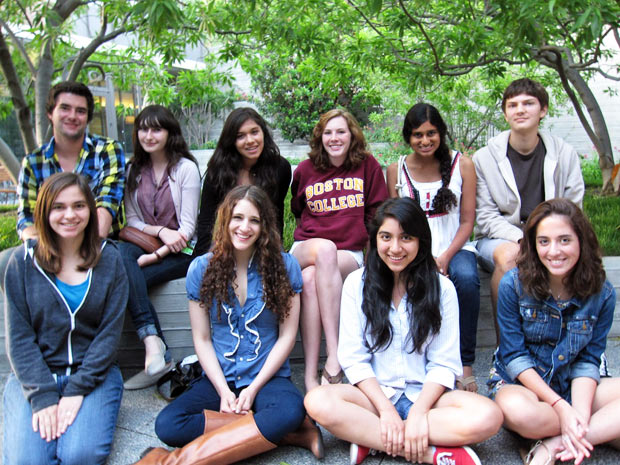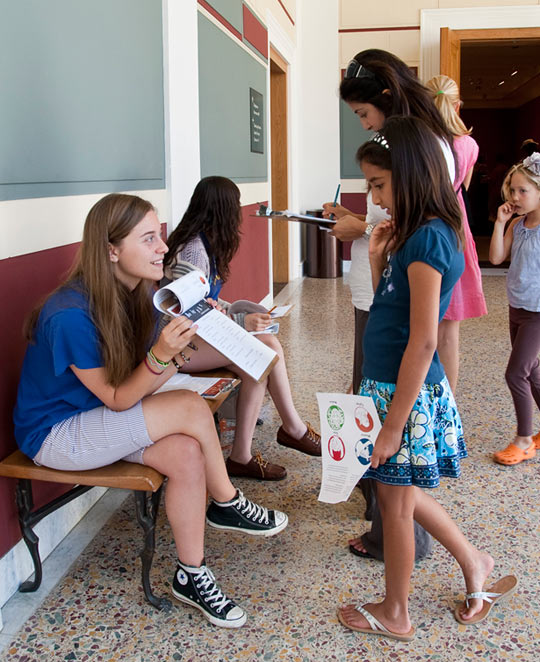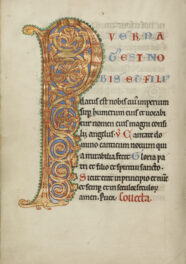I would like to introduce to the world the Villa Teen Apprentices.

This group of talented young adults is the second batch to work with us at the Villa on creating an innovative new program for the Getty designed specifically for the interests of teenage audiences. Our goal for the program is to create an environment in which teens can explore the inner workings of the museum.
Through conversations with staff, experience assisting with summer family programs, and team creative projects, the teens explore the theories and realities of careers in a cultural institution. The program is in the pilot stage—a trial or testing phase that enables us to experiment with format and content, letting the teens themselves shape its final form.
Building on our experience and the wonderful suggestions from the initial group of 15 teen volunteers in 2009, this year we created ViTA—the Villa Teen Apprentices. Vita is Latin for “life”—a fitting moniker for what we hoped would be a memorable life experience for the participants. As it’s turned out, it’s been a memorable life experience for me!
So far the Apprentices have assisted me in designing and testing a new Art Odyssey gallery experience for our visitors—they guide visitors through a game where kids and their parents challenge and defeat mythological monsters by learning about works of art.

They’ve also met with several museum staff, curated their own mini-exhibits of random objects they brought from home, and begun work on a group project for a new touring program that they will hopefully present to our visitors this fall. This project will go through the same review and approval process that each and every new program designed by the education staff at the Museum goes through, so the Apprentices get a sense of what it’s really like to work in a museum.
And get a sense of it they have! Sometimes they sound like they’ve been working in museums for ten years, so good is their grasp of the complex issues that come with collecting, preserving, and presenting objects to the public. But I’ll let the Apprentices prove that themselves.
Avantika Kumar, an incoming junior at Northwood High School, says:
What I find really interesting and thought-provoking [about museums] is the attention devoted to interpretation of these objects and their value to museum guests. After some of our discussions and readings, I was honestly completely confused—was it right to let the observer obtain an “unadulterated” experience of an object, allowing him or her to interpret the object on his or her own terms, or was it better to guide with information? Is making an art piece accessible for a variety of observers truly “dumbing down” the object and its value, or does the visitor’s response have as much value as the curator’s?
I think the idea of interpretation—communicating what curators know about art to a general public audience—is really interesting and so much harder than it seems at first glance. A person who interprets art to an audience has to be informative, I think, especially at a historical museum in which so much of an object’s meaning comes from the social or religious role it played and what it meant to the people who created it, but can’t totally shut out the viewer’s own personal response. And that’s a difficult balance to strike.
And recent Archer School for Girls graduate Emily Sulzer sums up her experience with ViTA like this:
ViTA is a collaborative program. There are no leaders, and everyone’s ideas are heard and respected. When I began here, I was pleasantly surprised to find that there are teenagers who love art and antiquity as much as I do. We have such intelligent discussions. I never realized that museum practices and policies could be debated. I know that the skills we’re learning in this program, like how to teach people about Greco-Roman art in an engaging way, work as a team, and think like museum visitors or curators, are abilities that will help us all in future careers both inside and outside of the museum world. It’s also exciting to think that our group has the ability to improve some of the Villa’s programs.
I love the educational component of this program. I never knew how much thought museum staff put into attracting and educating visitors, or the great importance of artifact conservation.
With such insightful minds coming to us at such a young age, I, for one, feel pretty good about the future of museums!




How to apply for the teen apprentices?
Where can I download the application?
Thanks.
Hi Sabrina,
I’m sorry to tell you that the teen apprentice program is on hiatus for a couple of years. We do still have the summer Latin Academy, if you’d be interested in that. You can find the application here: http://www.getty.edu/education/teens/form_latin_academy.html
Do you guys still have volunteering opportunities for teens? (I am a junior)